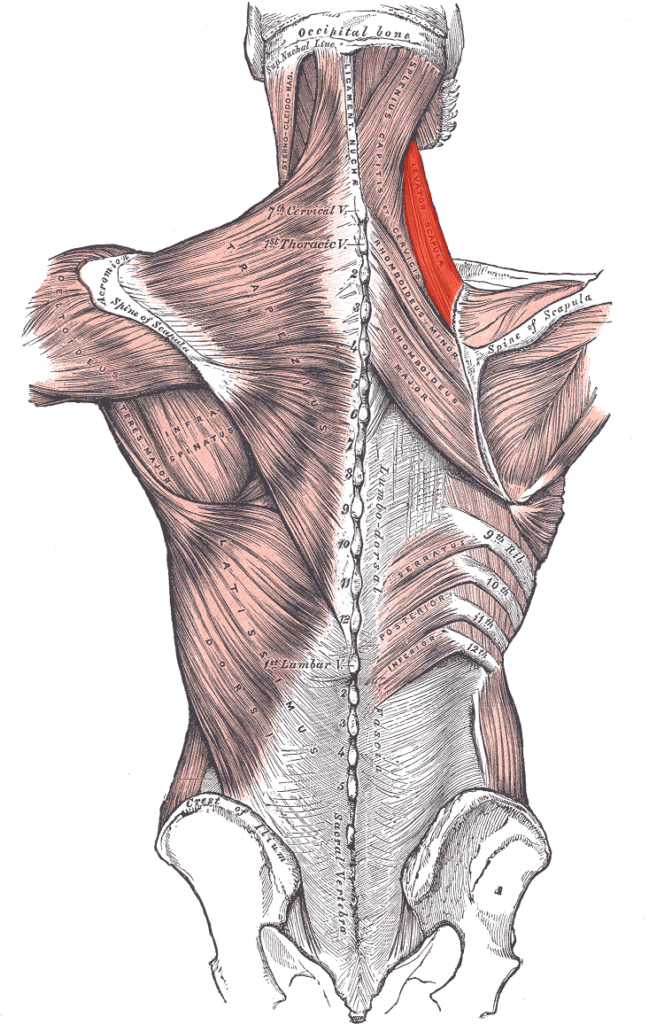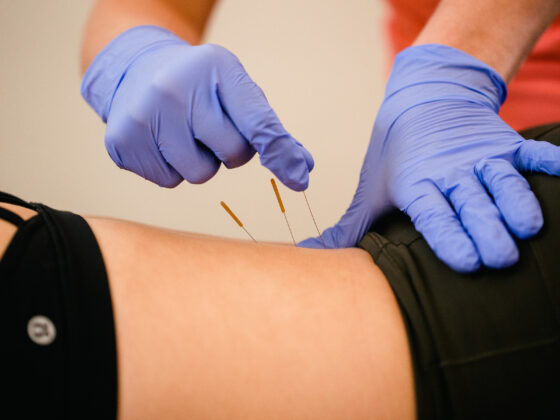Shoulder pain is a very common part of the human experience that many of us have or will experience. It’s estimated that anywhere between 18-26% of adults will have shoulder pain at some point in time (Linaker, et al, 2015). It can range from a mild, temporary issue, to a debilitating problem that impacts work, recreation, and daily life. Since pain in the region of the shoulder or shoulder blade (known as the scapula) is so common, it is very easy to assume the problem is located in that region, and thus remedies you may try will be directed at the shoulder.

However, there are instances where the shoulder may be the painful part, but the neck (also called your cervical spine) is actually the source of the issue. This can be due to irritation of the nerves that branch out from your spinal cord and travel through the arm as a result of a disc herniation, for example. These nerves control functions like sensation and movement, which can cause painful movement (more on this below).
Not only do nerves travel from the neck into the shoulder and arm, but the neck and the shoulder share muscle attachments which could also cause pain to be present at the level of the shoulder.

If someone has been experiencing nagging shoulder pain and has tried lots of remedies such as heat, ice, massage, or exercises on the shoulder to no avail, they may want to investigate to see if the issue is actually coming from the cervical area. To help understand why this may be the case, let’s do a quick review of how we classify pain that can “travel.”
Radicular Pain vs Radiculopathy vs Referred Pain – Know The Difference!
You may have heard health and wellness providers use these terms interchangeably, but they are each distinct and can be the underlying reason for pain going into the shoulder or arm. Here’s a very simple breakdown of these terms:
- Radicular pain is pain caused by a problem at the nerve root (the part of the nerve that exits the spinal cord between the vertebrae and then branches out down the entire arm)
- Radiculopathy is weakness or numbness caused by a problem at the nerve root. Radiculopathy can also be painful, but not always
- Referred pain is pain caused by a problem in a region such as a muscle or joint (not the nerve root) that is felt in a nearby area
So now that we’ve talked about how and why pain can exist away from the source of the problem, here are three (3) signs that your shoulder pain is actually coming from your neck (and what to do about it)!

Shoulder Pain Is Accompanied By Other Symptoms
This one seems like it may be noticeable right away, but you’d be surprised. Oftentimes these accompanying symptoms may be subtle or intermittent so they may slip under the radar, or you may feel that they are seemingly unrelated. Symptoms like numbness, tingling, and/or pain further down the arm can be indicative of a neck issue.
Another symptom to be on the lookout for is weakness in the shoulder, arm, or hand. While difficulty raising your arm could be a sign of something like a rotator cuff injury, it also can be due to irritation of the nerves. Another possible symptom could be if you notice changes in grip strength – like difficulty opening jars or dropping objects frequently.

Head Or Neck Position Changes Symptoms
Sometimes change in your neck position can either aggravate or ease shoulder pain. For example, if turning the neck toward the same side as the painful shoulder is limited or increases pain in the shoulder, this could be a sign the neck is the culprit (Wainner, et al, 2003). There may also be circumstances where tucking the chin back (referred to as cervical retraction) actually reduces pain in the shoulder. The neck may be involved in this shoulder pain scenario as well if this is the case.

Shoulder Pain Is Vague Or Tends To Move Around
Issues like a rotator cuff tear or bicep tendinitis tend to have very specific points of pain and activities or movements that cause an increase in pain. If pain in the shoulder region seems to be more diffuse or changes locations on any given day, the cervical spine should be considered as a possible contributor.
If any of this resonates with you or a loved one, here’s what you can do right now:
- First and foremost, don’t panic! The chances of it being something really serious are very low and can most often be treated with conservative measures such as physical therapy. It’s very similar to when we have low back pain in this sense – see our other blog article on LBP and MRIs.
- Temporarily avoid or modify things that aggravate your pain or symptoms. No need to drastically change your life, but if things are painful or flared, it may help to take a pause on some things.
- Contact your physical therapist or physician. If your shoulder pain is coming from your neck, it doesn’t mean you’ll need imaging or surgery, nor does it automatically mean you have a disc issue. Your physical therapist or physician can assess your situation and make recommendations on the course of action to take.
*Not medical advice – everyone’s situation is different, so consult with your healthcare provider*
References:
Linaker, C. H., & Walker-Bone, K. (2015). Shoulder disorders and occupation. Best practice & research Clinical rheumatology, 29(3), 405-423.
Wainner, R. S., Fritz, J. M., Irrgang, J. J., Boninger, M. L., Delitto, A., & Allison, S. (2003). Reliability and diagnostic accuracy of the clinical examination and patient self-report measures for cervical radiculopathy. Spine, 28(1), 52-62.
Blanpied, P. R., Gross, A. R., Elliott, J. M., Devaney, L. L., Clewley, D., Walton, D. M., … & Torburn, L. (2017). Neck pain: revision 2017: clinical practice guidelines linked to the international classification of functioning, disability and health from the orthopaedic section of the American Physical Therapy Association. Journal of Orthopaedic & Sports Physical Therapy, 47(7), A1-A83.




